Updated January 6, 2024
Derelict places are like a magnet. They pull us into their grasp, begging us to traverse time and space to forge connections with a past that’s both alive and dead at the same time. That was my experience inside Eastern State Penitentiary, also known as the ‘magnificent ruin’ of Philadelphia. Walking through the prison’s decaying corridors is like walking through a time machine. The occupants had long since departed, but in the crumbling cells and deserted guard towers, the ghostly presence of their history was powerful.
Table of Contents
What a history it was
When it opened in 1829, Eastern State Penitentiary was an experiment to revolutionize the penal system. Not just in Pennsylvania, but the world over. Roughly 300 prisons on five continents would eventually be based on the ‘Pennsylvania System.’
Eastern State became a ‘house of repentance,’ or ‘penitentiary.’ It worked from the premise that people are inherently good, and that solitude and reflection would lead to spiritual remorse and rehabilitation.
Silence and isolation ruled
In the early years, life at Eastern State was an existence of silence and isolation. Inmates spoke to no one except guards and the chaplain. They ate their meals in their cells. Once every two or three weeks, they would be taken from their cells to bathe.
On the rare trips outside their cells, inmates wore a dark hood over their heads. The hoods kept them from knowing where in the building they were, and the identity of other inmates.
Two 30-minute breaks were taken each day in each cell’s private exercise yard. Each yard was slightly larger than the adjoining cell. Exercise time was synchronized so two prisoners next to each other wouldn’t be out at the same time. Some prisoners spent years without seeing the face of another inmate.
The experiment didn’t last
The practice of isolation was destined to fail. Besides being harmful, it was expensive. By the early 1900s, Eastern State’s penitence-promoting methods were being phased out. This was mostly due to a need to house more prisoners. Single cells were converted to doubles and triples, and universal dining halls were added. By the 1930s, it was just another U.S. prison.
An architectural marvel
The original design consisted of a hub-and-spoke model, with seven one-story cellblocks extending from a central rotunda.
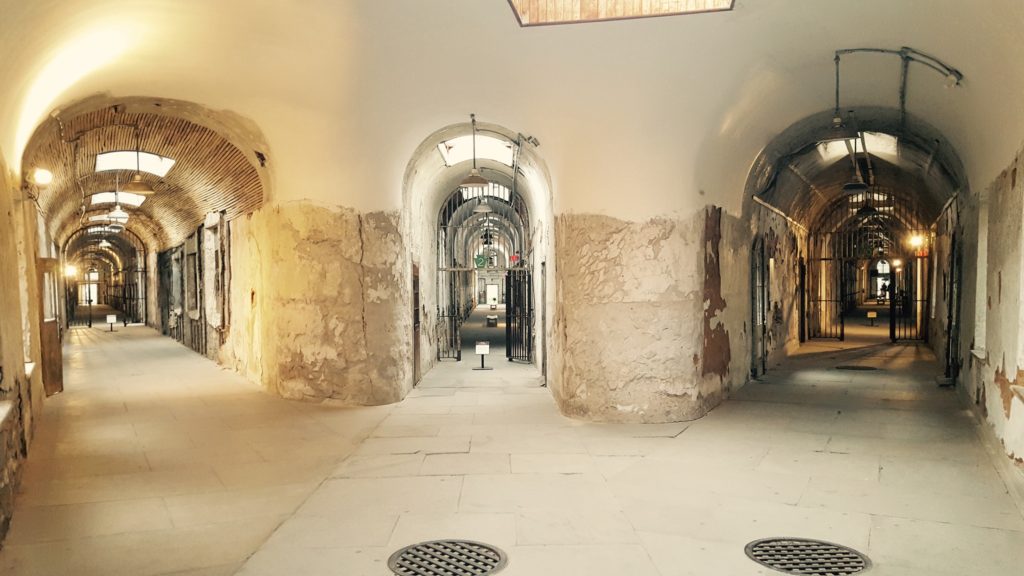 Image courtesy of Danielle Fear
Image courtesy of Danielle Fear
By the time the third block was built, the prison was already overcrowded, so blocks 4, 5, 6, and 7 were built with two floors.
Cell accommodations were surprisingly advanced for their time. They were centrally heated with pipes under the floor. Each 8 by 12-foot cell was equipped with a skylight, running water, and a bucket-flush toilet connected to a sewage system. Just one of many surprising facts about Philadelphia, this was at a time when the White House had no running water and was heated with coal-burning stoves.
Why wasn’t the prison torn down?
Many abandoned sites are eventually demolished. It’s remarkable that Eastern State Penitentiary didn’t meet that fate.
It occupies 11 acres over four square city blocks of prime real estate. It was falling apart before it closed in 1971. Between 1971 and the mid-eighties, the site became a playground of vandals, and a home for stray cats. An urban forest occupied hallways and cells. It still oozes with the disintegration, degeneration, and disorder associated with a long period of abandonment.
The city of Philadelphia bought the site in 1980. It couldn’t be repurposed, so selling it for commercial development was considered. Condominiums and a shopping complex were options. A complete demolition was also on the table. A loose coalition of historic preservationists, criminologists, and community leaders won out. It would be stabilized as a ruin, restored in a few places, and preserved to tell the story of the world’s first penitentiary.
Inside Eastern State Penitentiary
1. History comes alive through tours and exhibits
The “Voices of Eastern State” Audio Tour of the cellblocks and yards is well done. Narrated by actor Steve Buscemi, it’s informative and easy to follow.
The narrative is punctuated with complementary sound effects. It’s interspersed with stories from former wardens, guards, and inmates. The voice of the late sociologist Norman Johnston declares Eastern State Penitentiary “without a doubt the most influential prison that was ever built.”
The audio tour allows visitors to move at their own pace. Between audio segments, there’s space for the imagination to wander, and make the necessary connections with the past. It takes about 45 minutes, but much longer if you build in periods of reflection.
The entire audio tour is online if you’d like to listen to it in advance.
Hands-On History interactive experiences take place throughout the complex. Each one lasts about five minutes. An exception is the hospital experience that takes 20 minutes.
Experiences change daily and include:
- Tunnel Escape
- Prison Journalism
- Catholic Chaplain’s Office
- Hospital
- Soup Alley
A Guide-Led Tour and Discussion takes place on Saturdays and Sundays at 2:00 pm.
Exhibits include:
- Prisons Today
- The Big Graph
- Jewish Life at Eastern State
- Hidden Lives Illuminated
- Murals of the Catholic Chaplain’s Office
- Al Capone’s Cell
Check the website for an updated list of experiences and exhibits. Some may be temporarily unavailable. For the latest artists’ exhibits, see the On View Installations page.
For those who enjoy haunted attractions, Halloween Nights is an immersive experience offered on a seasonal basis.
2. Linking the past to the present
In a country with such a high rate of incarceration, Eastern State Penitentiary is the closest thing there is to a national ‘prison museum.’
Sure, Alcatraz might be better known in the travel world where ‘prison tourism’ is on the increase, but it can’t hold a candle to Eastern State. “In its educational and historical narrative, it’s clearly at the top,” according to Michael Welch, author of Escape to Prison: Penal Tourism and the Pull of Punishment. “It’s not a theme park. It’s not intended to amuse you.”
Like any good museum, Eastern State is more than a curator of the past. It helps us understand our present and prepare for the future.
Eastern State has hit the mark with its award-winning exhibit, Prisons Today: Questions in the Age of Mass Incarceration. In 2017, it won first place in the prestigious Excellence in Exhibitions awards presented by the American Alliance of Museums. According to Sean Kelley, Senior Vice President, Director of Interpretation and Public Programming, “Many Americans view criminal justice reform as the civil rights challenge of this generation. It’s time to address this subject with honesty and critical thinking, and there’s no better place to do so than Eastern State Penitentiary.”
The exhibit, and Eastern State Penitentiary Historic Site, is a monument to society’s evolving views on incarceration. It’s a credit to the activists who saved it from demolition.
Logistics
- What: Eastern State Penitentiary Historic Site
- Where: 20127 Fairmount Avenue, Philadelphia.
- When: 10:00 to 17:00 Wednesday through Monday, with the last entry at 16:00; closed on Tuesdays, Thanksgiving, Christmas Eve, Christmas Day, and New Year’s Day.
- Cost: Online tickets cost $2 less than onsite tickets. Admission at the door costs $21 for adults, $19 for seniors, and $17 for students and children aged 7 to 12. These are 2024 prices.
- Information: (215) 236-3300 or www.easternstate.org.
Conclusion
If you’re heading to Philadelphia, venture Inside Eastern State Penitentiary: the ‘magnificent ruin’ of Philadelphia. It’s one of the country’s more unusual museums, and a stop you won’t regret. It was a definite highlight of my four-day visit.
Philadelphia appeared on my radar when two former colleagues were attending a conference in the city and invited me along. I was surprised to discover how safe and walkable Philadelphia is and how much there is to see and do. There are many free things to do and given how walkable the city is, a lot can be accomplished with a two-day itinerary.
If you found this post helpful, please share it by selecting one or more social media buttons. If you have any thoughts about Eastern State Penitentiary or suggestions on things to do in Philadelphia, please do so in the comments. Thank you.
Care to pin it for later?
The Amazon link is an affiliate link. If you use it to buy something, you don’t pay more, but this site earns a small commission that helps pay the costs of maintaining this site. Thank you for your support.

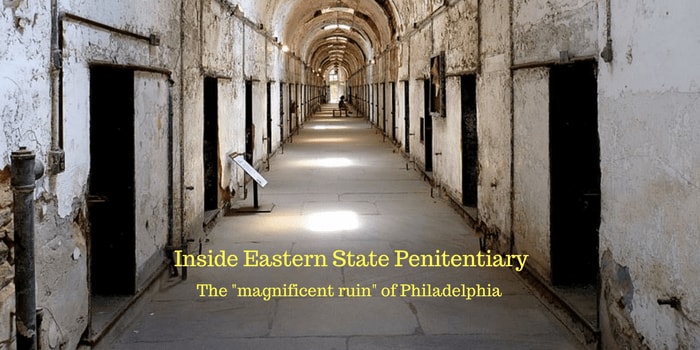
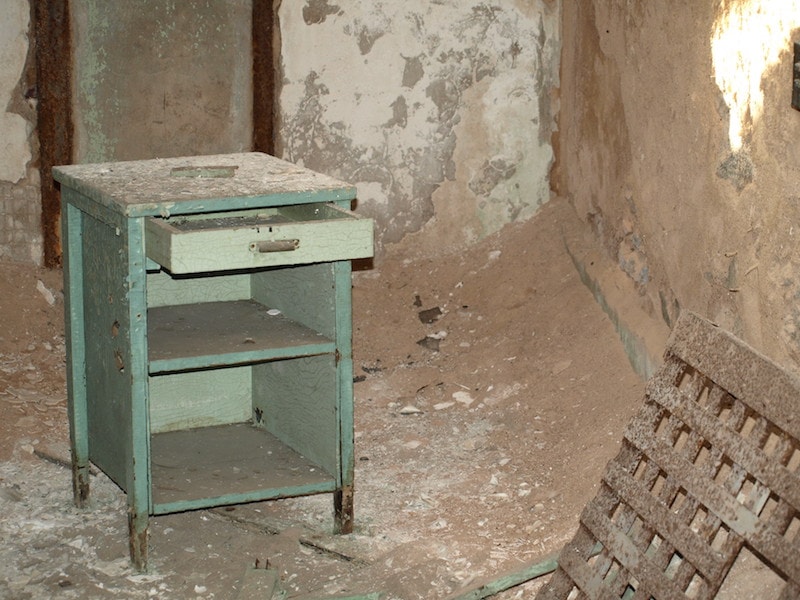
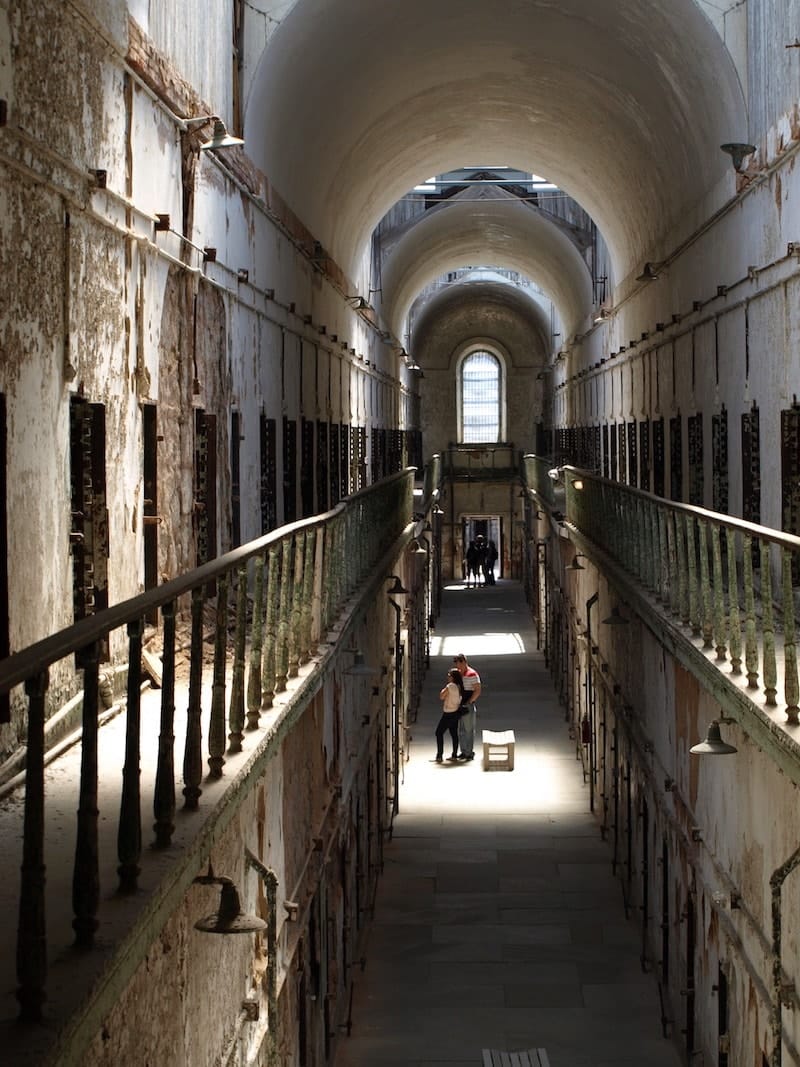
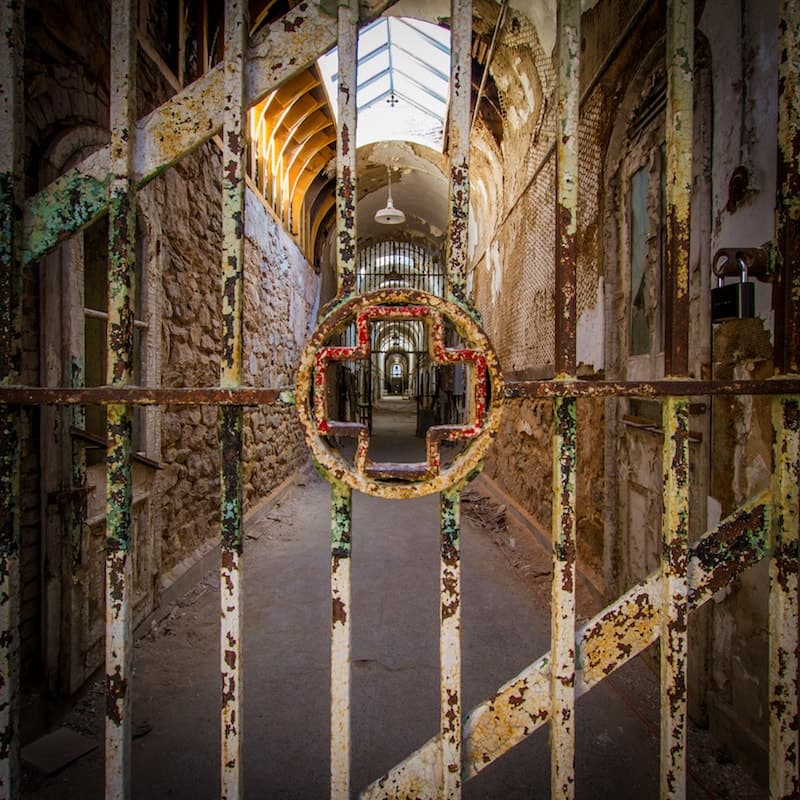
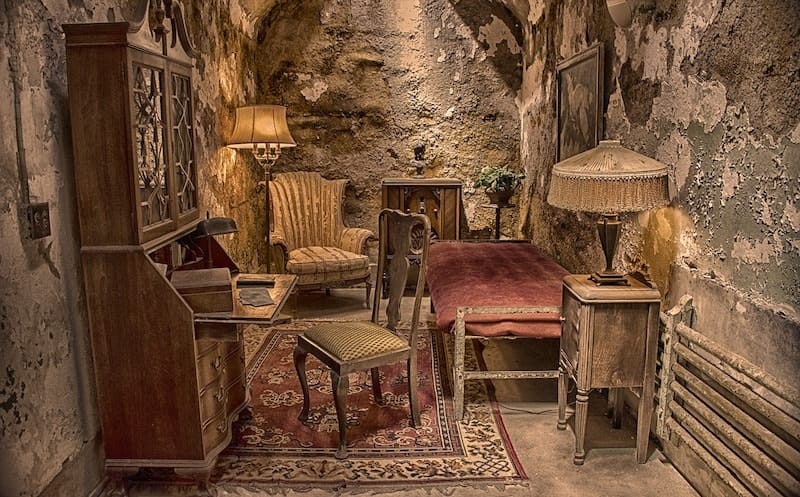

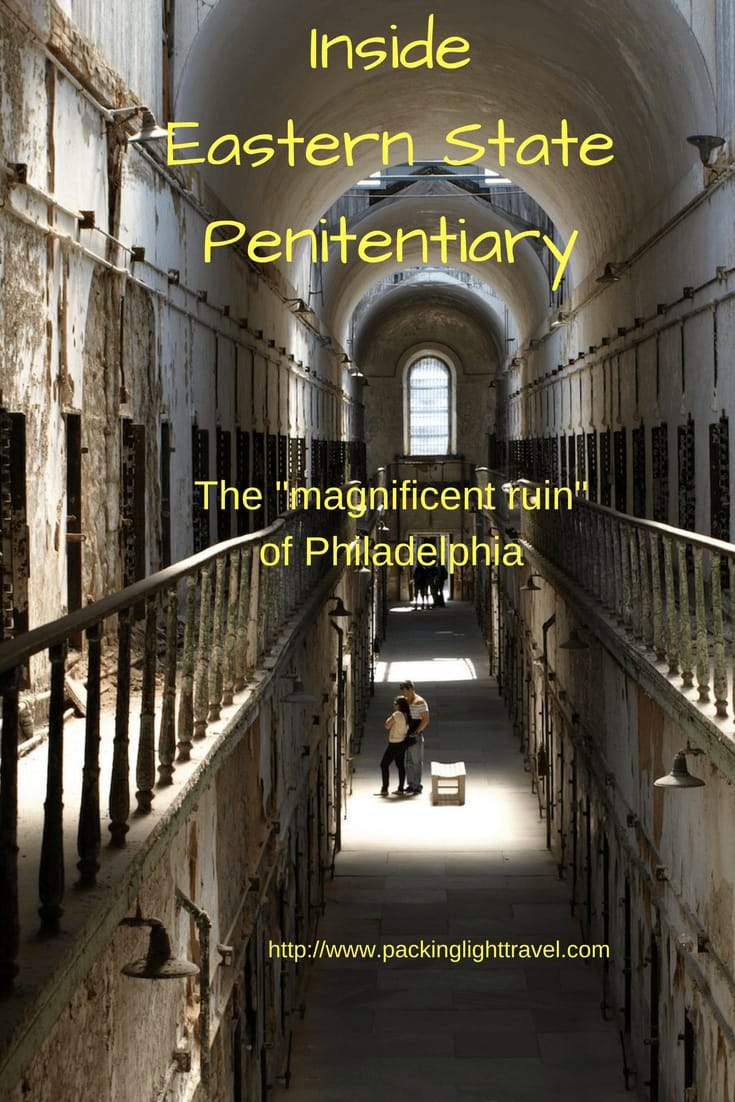




Trackbacks/Pingbacks